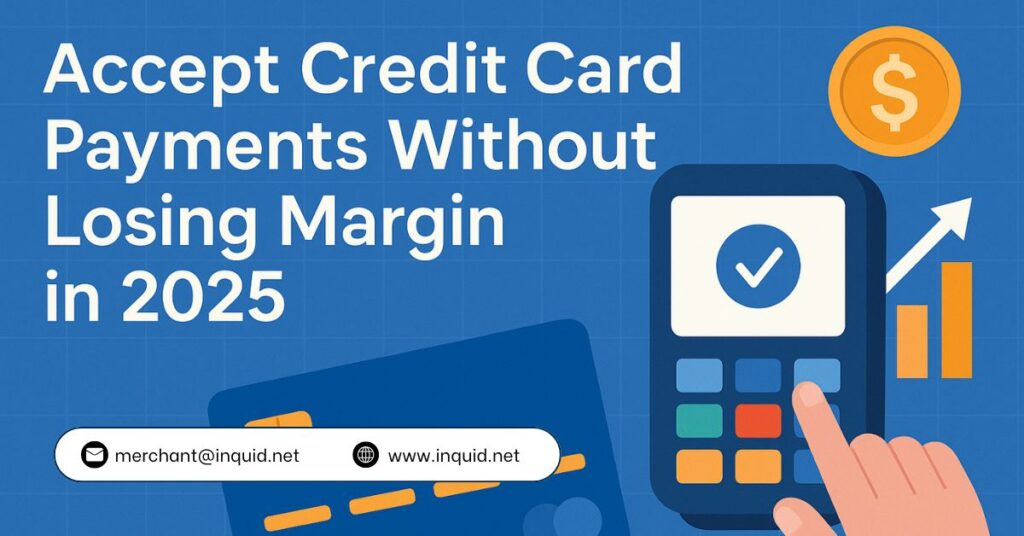
Managing credit card payments has never been cheap, especially for businesses flagged as high risk. Between processing fees, chargeback losses, and declined transactions, it can feel like you’re giving away a chunk of every sale. But there are ways to accept credit card payments without watching your profit margins shrink every month. It starts with knowing where the money leaks happen and how to plug them without sacrificing customer experience.
Know Where Fees Are Hiding
Every credit card transaction comes with a set of costs. These include interchange fees, processor markups, and sometimes compliance or fraud management add-ons. For high-risk merchants, these fees can be significantly higher than average. If you’re not actively reviewing your statements, you’re likely missing where the bulk of your profits are being shaved off.
To break down these costs and how they vary, review our detailed guide on credit card processing fees. A lot of providers bury the details in complex tiers or “bundled” pricing, which looks simple but often works against you.
Choose a Processor That Understands Your Industry
Not every processor works well with high-risk categories. Some might approve you quickly but offer limited risk control, while others may impose strict volume caps or charge more for fraud tools. If you’re in forex, gaming, adult, or IPTV, working with the wrong provider could mean lower approval rates and a spike in failed transactions.
It makes a difference when you choose from the best high-risk credit card processing options. These are built to support the complexities of international sales, dynamic billing, and high-volume traffic without creating friction for your users or draining your revenue through inflated risk fees.
Cut Revenue Loss from Chargebacks
One of the biggest threats to profit margins is chargebacks. Whether it’s from fraud, user error, or refund disputes, each chargeback doesn’t just take away a sale. It adds penalty fees and threatens your merchant account stability. You need tools that detect risky patterns early and give you time to respond before things spiral.
Using a system that offers fraud scoring, auto-alerts, and real-time blocking can help significantly. We’ve explained how a high-risk payment gateway for chargeback management gives you the right level of control before things hit your processor’s threshold.
Fix Transaction Decline Rates
You might not even know how many potential sales are being lost to unnecessary declines. When a transaction gets flagged due to mismatched billing, geo-restrictions, or 3DS issues, it’s not just a lost customer. It’s wasted marketing spend and an opportunity gone.
To reduce this kind of loss, you need better routing, fraud filters, and updated BIN databases that reflect global behavior. If you’re not optimizing for this, you’re leaking revenue in silence. Learn how to increase card approval rates without putting your account at risk.
Offer Alternative Payment Methods Without Sidelining Cards
Credit cards are still a dominant force in online sales. But depending only on them, especially in high-risk setups, can lead to margin pressure. Supplementing with eWallets, local bank transfers, or crypto doesn’t mean sidelining cards. It just gives your customers more ways to complete the checkout and helps you avoid hard declines from a single payment channel.
When these options are properly integrated with your credit card system, you reduce cart abandonment, limit chargebacks, and get more flexibility with settlements. It’s not about replacing cards but making sure you’re not forced to rely on a single method that may not be reliable in every market.
Wrap Up
Margins don’t just shrink because of pricing. They erode over time through weak setups, bad processing matches, high decline rates, and chargeback penalties. To accept credit card payments effectively, it’s not just about choosing a gateway. It’s about finding the setup that protects your bottom line while keeping approval rates high and losses low.
If you’re trying to figure out which direction to go, contact inquid. We work directly with high-risk merchants and help them stay profitable while staying compliant.
Frequently Asked Questions
What is the average fee for high-risk credit card processing?
High-risk merchants can expect to pay between 4 to 7 percent per transaction, depending on the provider, industry, and chargeback history.
Can I reduce chargebacks while still accepting global credit cards?
Yes. Using fraud detection tools and working with gateways that support chargeback alerts and dynamic rules can lower your chargeback ratio significantly.
What’s the biggest reason merchants lose money on credit card transactions?
Poor approval rates and hidden processor fees are the top two factors that cut into merchant profits over time.
Is it safe to add crypto and alternative payments alongside credit cards?
Yes. Adding options like crypto or local bank transfers gives flexibility and helps recover failed credit card transactions, especially in cross-border setups.
